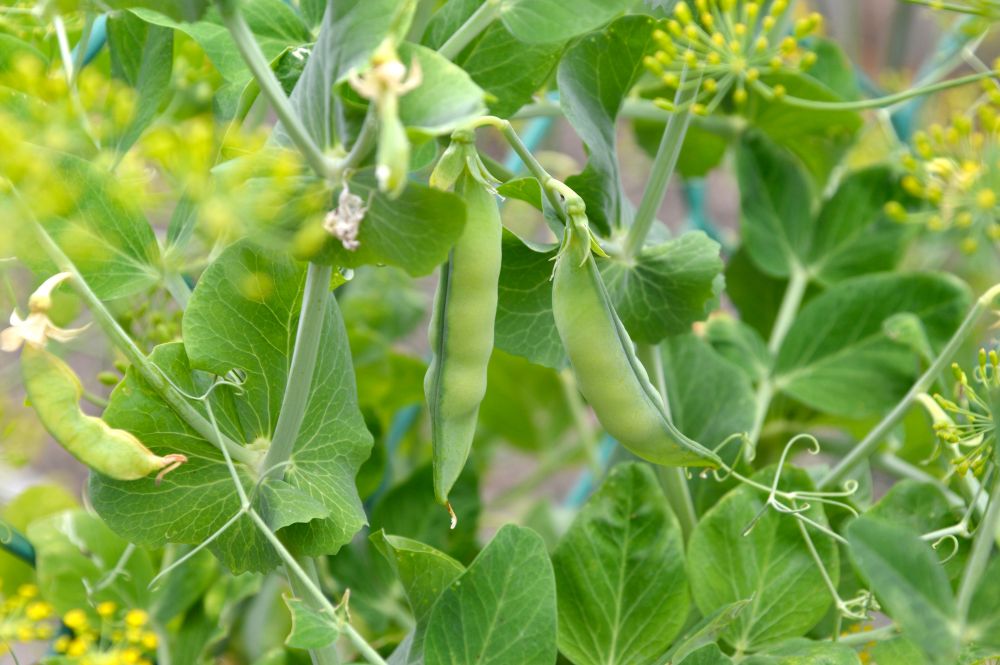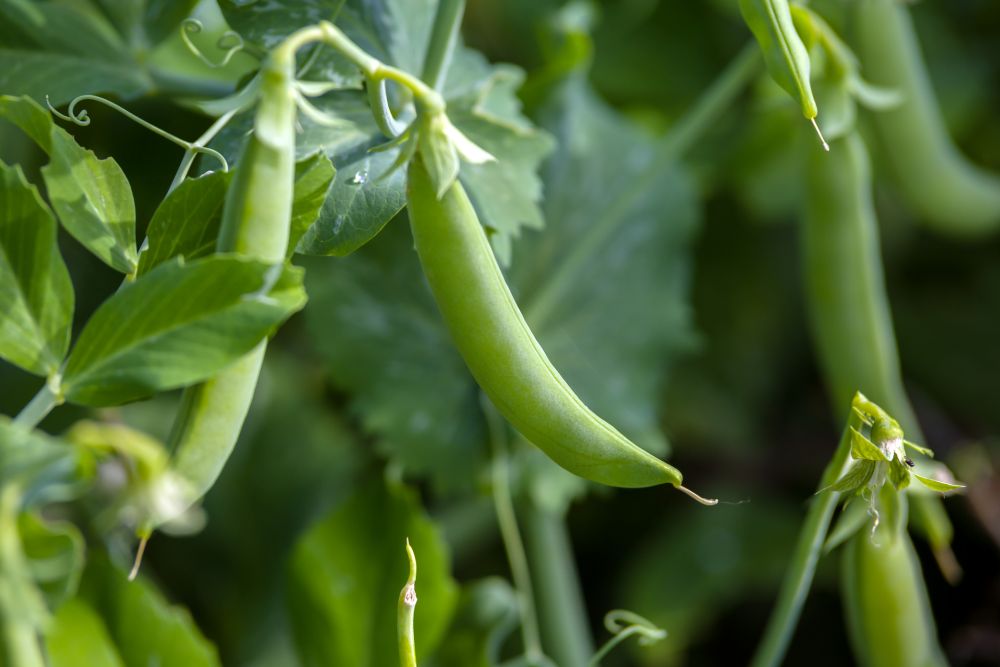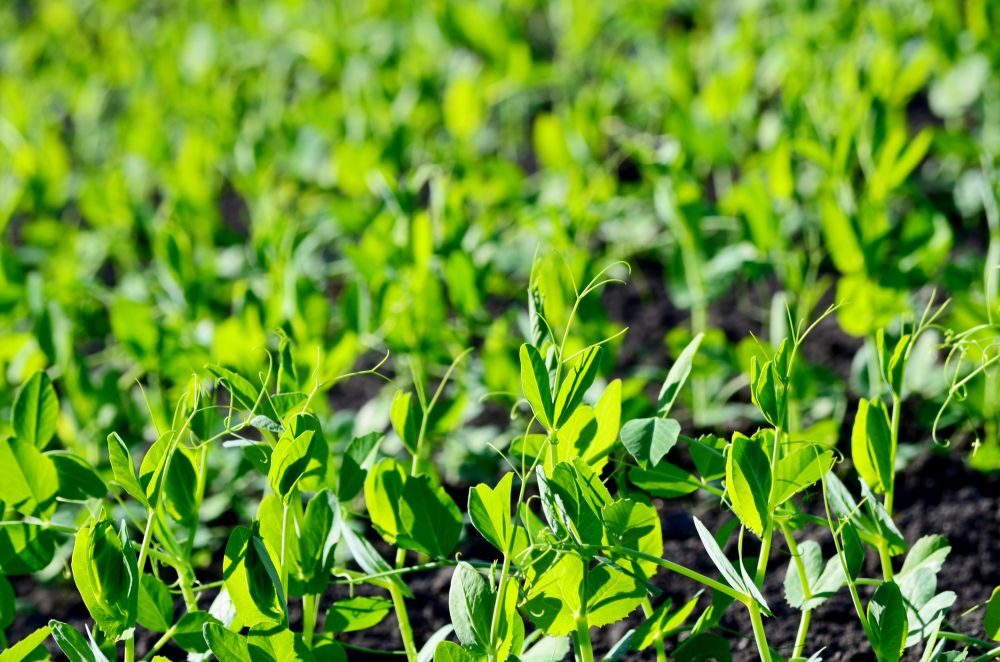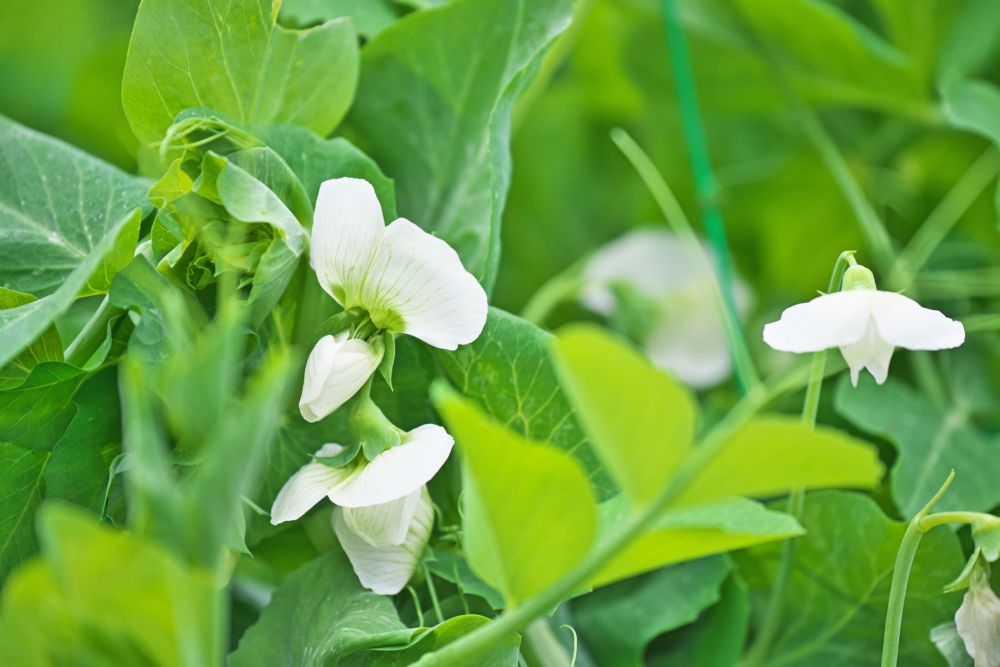Peas Wilting And Other Pea Growing Problems
Peas are delicious legumes. They have a wide variety of cultivars that grow in just about any zone and soil. But while peas are notorious for tolerating anything from farthermost cold to drought, they hands autumn victim to many diseases.

Moreover, success is non ever guaranteed when growing peas. Sometimes you won't have peas in the pods while other times you won't have pods at all. Add to that peas wilting and getting yellowish and you lot get an thought of the number of pea growing bug. We compiled those problems and added a few fixes to assistance you go along your pea plants good for you and ensure your difficult work doesn't get to waste material.
Pea Plants With No Pods
When pea plants don't produce pods yous might suspect foul play. Did the deer eat the flowers and thus denied yous the chance to eat some peas this twelvemonth? Or was information technology a mysterious disease that rendered all the peas in your garden sterile? Neither the deer nor diseases are responsible for pea plants bearing no pods. The reply is actually simpler than that.
Information technology all boils downward to how much nitrogen have you fed the plants with. Too much nitrogen means more foliage and fewer flowers. Too footling nitrogen makes the plants also weak to produce flowers in the commencement identify. Phosphorus deficiency is another cause of this problem. Plants demand phosphorus to produce flowers. Without flowers, you won't have pods.
Bees are important for the pollination of flowers. If yous don't get bees to visit your garden or it rained when the flowers were in bloom, then the flowers will fade without being fertilized.
How to Fix it
Make an inventory of the growing conditions of peas and bank check that the plants are getting enough feeding. Here are a few steps to solve this problem.
- Nitrogen: Peas get their nitrogen from the air so they don't do well in soil with high concentrations of nitrogen. When using a fertilizer brand sure it's depression in nitrogen. Unless the nitrogen levels in the soil are too low so yous can use a balanced fertilizer.
- Phosphorus: Unlike nitrogen, peas demand phosphorus to grow flowers. If you notice that the plants are not carrying enough blooms, feed them with a fertilizer high on phosphorus.
- Pollinators: Pollinators such as bees and collywobbles are essential for having a good pea harvest. Plant floral plants to attract these pollinators to your garden. If that doesn't work, yous can manually pollinate the flowers by shaking the pea plants. This sends the pollen to the female flowers and pollinates them.
- Temperature: As cool-flavor plants, peas don't exercise well in hot and dry out weather. Time your planting so that the peas bloom and mature before the temperature rises in the summertime.
Peas Wilting

Peas wilt for many reasons. The plants might outset to wilt when they don't get enough h2o. Dry soil and loftier temperature have this issue on the plant. Simply sometimes pea wilting tin be the issue of a disease.
Two types of diseases cause peas wilting. The beginning is Fusarium wilt and the other is Near wilt. Neither of those diseases should exist taken lightly. If left without treatment, the wilting peas will non produce pods and would die. Poor soil can also grow weak plants that succumb to peas wilting easily.
How to Fix it
Before you fix out to set up the problem of peas wilting, you need to notice out the cause of the result. If information technology'due south inadequate h2o, and so watering the plant regularly should set the problem. If it's a disease, then you need to take the proper steps to foreclose it from spreading to the residue of the plants.
- Water the plants and bank check if that takes care of the wilting problem.
- Cheque the base of operations of the stalk. If you notice whatsoever discoloration specially cerise, or yellow colors. That'due south an indication of the peas wilting disease.
- Remove whatever infected plants to continue the residue of the pea plants safe. Burn the infected plants.
- Till the soil and exit it under the dominicus to get rid of the pathogens.
- Rotate the crop and don't constitute in an area where the peas were infected.
- Make sure the seeds are resistant to peas wilt earlier planting them.
- Mix in organic materials to enrich the soil and better drainage.
Pea Streak Virus
Of the many viruses that aphids carry and spread around, the pea streak virus is probably the near mutual 1. The illness appears in the course of brown stripes at the peak of the pea plants. The stripes then extend to cover the whole plant. Other viruses also cause the same disease including alfalfa mosaic virus and bean yellow mosaic virus.
About of these pathogens overwinter on other crops such as alfalfa and wait for the spring to infect the pea plants. Infected plants are usually stunted and lose many stems and leaves. Even the pods become infected which affects the yield.
How to Gear up it
As serious every bit the pea streak virus is, at that place's no treatment for information technology. Even pea cultivars are not resistant to the disease. So you need to expect for other ways to care for and protect your pea patch and avoid a loss of the harvest. Here are a few means to deal with this disease.
- Since aphids are the main carriers of the virus, then fighting them off will aid protect your pea patch.
- Keep an eye out for the tiny insects and spray them with neem oil or rub the plants with a swab soaked in rubbing booze.
- Don't grow peas near alfalfa or red clover. The virus overwinters on these legumes.
- Remove infected pea plants every bit soon every bit you find the symptoms of the disease.
- Rotate pea planting in the garden and don't found them in an area that was infected in a previous flavour.
Pea Plant Companions

If perennial legumes such as alfalfa and red clover are not good pea companions, so what is? This is a common question and as we have seen, companion plants tin either make or intermission your pea harvest.
Companion plants are those plants that benefit each other. They could be plants that repel insects, fix the nitrogen in the soil, or protect other less hardy plants from the glaring sun or the cold temperature at dark. So which plants are platonic as pea companions?
How to Prepare it
Since peas are the legumes that ready the nitrogen in the soil, then you need to wait for other companion plants that offer a different do good to them. Here are some skillful candidates.
- Aromatic plants: Grow peas next to cilantro and mint. The effluvious plants thwart off pests while benefiting from the extra dose of nitrogen in the soil.
- Leafy greens: Spinach and lettuce prefer soil that is rich in nitrogen. Although they don't offer the peas anything in return, you'll have a good harvest of the delicious veggies.
- Plant radishes, beans, carrots, and cucumbers with peas.
- The Brassica family unit is famous for getting along well with peas. And so grow cabbage, Brussels sprouts, and cauliflower near the legume.
- Other plants that pair well with peas are tomatoes, corn, potatoes, turnips, eggplants, and parsnip.
On the other hand, peas do not do well adjacent to other plants. So avert pairing peas with garlic, onion, and gladioli. Some of these plants are reported to prevent pea plants from flowering.
Empty Pea Pods
While having the pea plants abound no pods is frustrating, information technology's not as soul-crushing every bit harvesting the pods only to find them empty. The trouble is that this empty pea pods trouble tin go undetected right until the very stop of the flavor. This makes it not easy to ready in time. Considering by the time you realize that the pods have no peas in them, information technology's too late to do annihilation about it.
At the same time if you lot examine your pea pods too early and observe them empty you lot might mistakenly diagnose them and proceed to ready a trouble that doesn't exist. Pea pods need time to mature and develop the peas.
Of course, there's another simple explanation for why the pea pods are empty. Y'all might have picked a diversity that doesn't grow peas. Snowfall peas and snap peas are two varieties where you lot eat the pods themselves, non just the tiny peas within.
How to Fix it
Since there are many causes for the empty pea pod problem, you demand to brand certain you're treating the real result. Hither are a few ways to deal with this problem.
- If yous cheque the pea pods and find them empty, permit them a couple of weeks before checking them again. Chances are they're not mature even so.
- Double-check the seeds you have planted. If they are snow peas or snap peas, y'all tin can go ahead and harvest the light-green pods and consume them.
- Make sure the pea plants are well spaced. Overcrowded peas don't produce well and the harvest will be light.
- Don't feed the peas with nitrogen since they get it from the air. Focus on fertilizers loftier in phosphorus.
- Keep runway of the pollination of the pea flowers. If the bees don't practice a expert chore, yous might end up with empty pods. Give the plants a adept milkshake to help cocky-pollinate the flowers.
Yellowing Pea Plants

If your pea plants turn yellow before their fourth dimension, yous demand to examine them and look for the cause of the problem. It could very well be a disease. The master culprits behind yellowing pea plants are downy mildew, root rot, Fusarium wilt, and Ascochyta bane.
How to Fix it
Treating the pea plants means you'll have to diagnose them and determine which disease is causing them to turn xanthous. Here'due south a rundown of the four diseases and their symptoms.
- Downy mildew: A fungus that thrives in loftier humidity and poor ventilation. Symptoms of the affliction include yellowing of the plants as well every bit grayness spots on the stems and leaves and blackness spots on the pods. Improve ventilation effectually the plants to prevent the disease.
- Ascochyta bane: Another fungus that hides under debris and weeds during the winter. It likewise infects the seeds and grows with the plant. It causes the pods to drop besides as the leaves to plow xanthous. Remove infected plants and clean the area around the pea plants off weeds and debris.
- Fusarium wilt: Pea yellowing is the early symptom of this disease. This leads to stunted growth, lack of flowering, and few if any pods. The spores of the fungus reside in the soil throughout the winter and infect the plants through the roots. Use seeds resistant to this disease and rotate pea planting in the garden.
- Root rot: This fungus infects the base of the plants. Every bit they turn yellow, the stems wilt then fall under the weight of the foliage. The spores are carried by wind and rain and so use seeds treated with fungicide and improve ventilation between the pea plants to prevent this disease.
Source: https://www.diys.com/peas-problems/
0 Response to "Peas Wilting And Other Pea Growing Problems"
Enviar um comentário